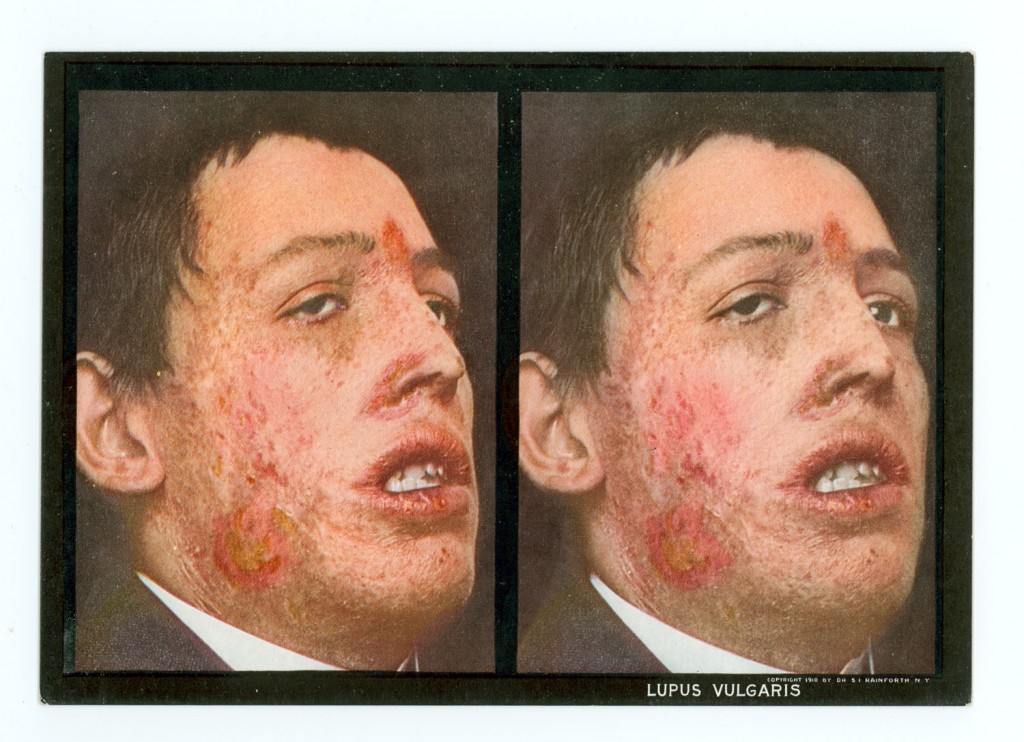Missed our 2011 exhibition “Our Friend, the Sun: Images of Light Therapeutics, 1901-1944”? Here’s a sneak preview of the digital exhibition currently under construction. You can listen to the original exhibit talk by curator Dr. Tania Anne Woloshyn here. And stay tuned for more!

S. I. Rainforth. The stereoscopic skin clinic; an atlas of diseases of the skin, consisting of colored stereoscopic illustrations and a text in the form of clinical lectures, designed for the use of practitioners and students of medicine. New York: Medical Art Pub. Co., 1914.
These images are designed for an early twentieth-century viewing device called a stereoscope, originally intended less for medical purposes than for entertainment. The image shows a disfiguring case of lupus vulgaris, tuberculosis of the skin, on the face of a male patient. The two photos are each shot from a slightly different angle so that when viewed together through the stereoscope they form an optical illusion in 3D.
Dr. Selden Irwin Rainforth (1879-1960) was a young physician from New York when he compiled The stereoscopic skin clinic. The work consisted of over 130 stereoscopic plates with a viewing device and was published in multiple editions. Detailed descriptions of the diseases on the back of each photo card provided useful information about skin conditions at a time when dermatologists were still rare.
Further reading
John Thorne Crissey, Lawrence Charles Parish, and K. Holubar. Historical Atlas of Dermatology and Dermatologists. Boca Raton, FL: Parthenon, 2002.
Robert Jackson. “Historical outline of attempts to classify skin diseases.” Canadian Medical Association Journal 116, no. 10 (May 1977): 1165–8. PMCID 1879511. [McGill users]
Helmut Gernsheim and Alison Gernsheim. The History of Photography: From the Earliest Use of the Camera Obscura in the Eleventh Century up to 1914. London: Oxford University Press, 1955.

